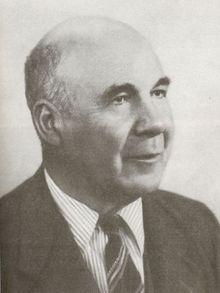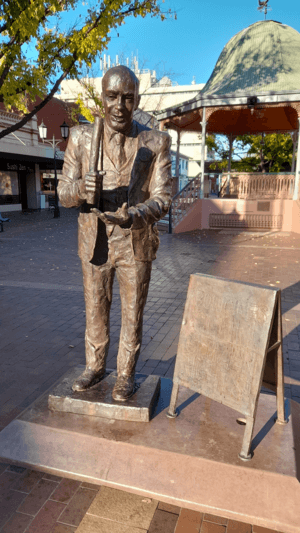William Ferguson (Australian Aboriginal leader) facts for kids
William "Bill" Ferguson (born 24 July 1882 – died 4 January 1950) was an important Aboriginal Australian leader. He worked hard to get equal rights for Aboriginal people in Australia.
Contents
Early Life and Work
Bill Ferguson was born in Darlington Point, New South Wales. He grew up near the Warengesda Mission close to Cootamundra. After leaving school at 14, he worked with his father as a shearer. Later, he became a labourer and a mailman in western New South Wales.
His first steps into activism were helping to organize shearers for the Australian Workers' Union. He also became the secretary of a local branch of the Australian Labor Party. From 1933, he lived in Dubbo with his wife, Margaret, and their 12 children. Margaret also had both Scottish and Aboriginal heritage.
Fighting for Citizen Rights
Even though Bill Ferguson lived outside the "protection" system for Aboriginal people, he knew how difficult life was for many others. In 1936, the government changed a law called the Aborigines Protection Act 1909. This law gave the government more power over Aboriginal people's lives. After this, Bill Ferguson began speaking out. He started asking for "civil rights," which he later called "citizen rights," meaning equal rights for all.
In 1937, he started the Aborigines Progressive Association (APA) in Dubbo. He also spoke to a special committee from the New South Wales Legislative Assembly. This committee was looking into how the Aborigines Protection Act was managed. Sadly, his efforts did not lead to immediate changes from this committee.
The Day of Mourning
Bill Ferguson worked with other Aboriginal leaders like William Cooper and John Patten. Together, they organized a special event called the Day of Mourning. This event happened on Australia Day in 1938. It was a protest to show how Aboriginal people felt about the lack of their rights.
To promote their cause, Bill Ferguson wrote a pamphlet with John Patten called Aborigines Claim Citizen Rights!. He also organized five APA conferences in different country towns starting in 1938. The government eventually responded to the APA's criticisms. They decided to have two Aboriginal people on the Aborigines Welfare Board. Bill Ferguson was elected as one of these members. While on the board, he was shocked by the many complaints about conditions in Aboriginal reserves. He tried hard to make things better for people living there.
Later Efforts and Legacy
In 1949, Bill Ferguson traveled to Canberra to speak with the national Chifley Labor government. He represented the Australian Aborigines' League. He asked for many changes to how Aboriginal affairs were managed. However, the Minister for the Interior, Herbert Johnson, did not listen to his requests.
Bill Ferguson was very angry about this. He resigned from the Labor party. He then decided to run for Parliament as an Independent candidate. This was for the 1949 Australian federal election in his area, called Lawson. He did not get many votes in the election.
After giving a final speech before the election, he collapsed. Bill Ferguson sadly died from heart failure on 4 January 1950, at Dubbo Base Hospital. His work helped lay the groundwork for future Aboriginal rights movements in Australia.



